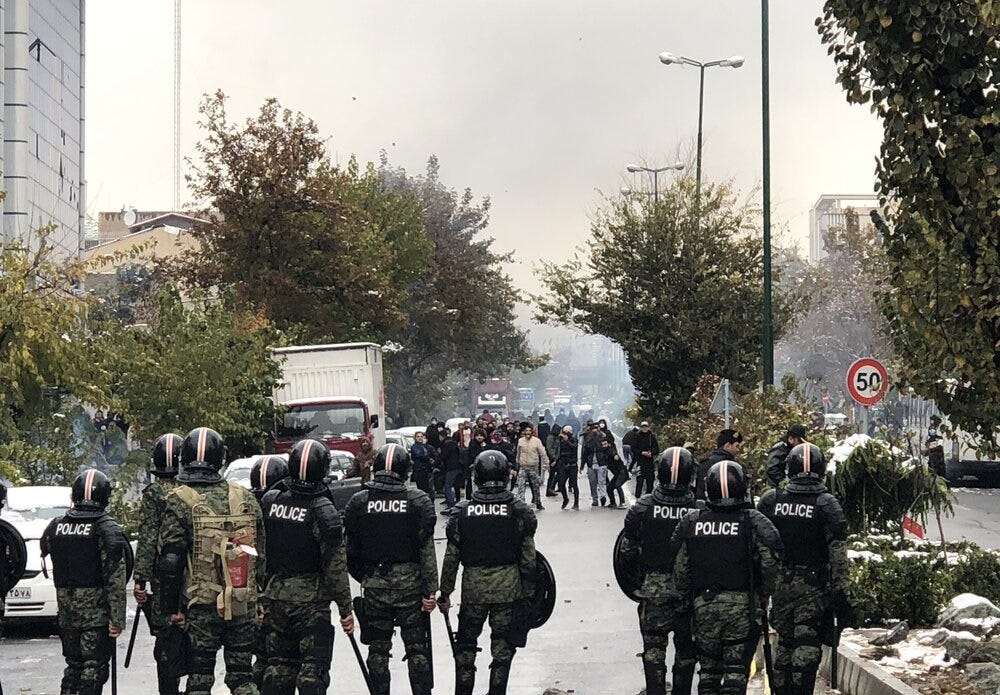“Inside Iran’s Protests.”
And those trying to subvert them.
No one we know of writes of Iran’s domestic scene—its politics, its valences and alignments, the Iranian and foreign forces aligned against the Islamic Republic— as knowledgeably and insightfully as Muhammad Sahimi. We are delighted to welcome Professor Sahimi back into our pages.
This is the first of two parts.
—P.L.
Muhammad Sahimi
Since 2018 Iran has witnessed three sets of prolonged nationwide demonstrations. These have received greater or lesser attention in the West, one to the next. Let us consider them in the context of Washington’s never-reported but uninterrupted campaign to subvert the Islamic Republic. Apart from what we can learn here about the nature of Iran’s opposition, Americans can learn much about what is done covertly in their names.
The first of these waves of protest occurred in January 2018, when a far-right political faction tried to topple the government of President Hassan Rouhani through manipulated fake demonstrations. They quickly lost control, as the demonstrations had the ironic effect of freeing ordinary people to express their anger and frustrations with what was happening.
The second set of demonstrations occurred in November 2019, when the government decided to triple the price of gasoline. At least 321 people lost their lives on this occasion.
The third wave of large demonstrations began on 13 September 2022, when Mahsa Amini, a 22–year-old Iranian woman, was detained by the Guidance Patrol (incorrectly translated as the “Morality Police” in the West) for allegedly not wearing the proper Islamic hijab. While in detention, Amini collapsed and was taken to a hospital. The Iranian government claimed that she had suffered a stroke followed by a heart attack. Eyewitnesses, including some who had presumably been detained with her and transferred in the same police car to the detention center, alleged that she had been mistreated and that her skull might have cracked. Amini died three days later.
Regardless of the precise circumstances surrounding Amini’s death, the Iranian government was responsible, because she died in detention. This outrageous crime provoked the Iranian people, particularly the young generation, to stage large demonstrations that began in Tehran and quickly spread to more than 140 cities and towns around the nation. They lasted until early January of this year.
These protests have been called the “woman, life, and freedom movement” by the protestors. Up to 522 people may have been killed, including about 70 children and 68 security forces. In addition, the government executed four demonstrators, two of whom were accused of taking part in the murder of security forces, which added further wounds to the nation’s conscience.
Exploiting grievances.
These three cases have things in common. In each, demonstrators had legitimate demands, calling variously for an end to social and political repression and mandatory hijab, for uprooting institutionalized corruption, and for the eventual establishment of a democratic republic. And in every case foreign powers tried to exploit these legitimate grievances to advance their own agendas. Iran’s enemies—Saudi Arabia, Israel, and their lobbies in the United States—as well as the Trump and Biden administration intervened to redirect people’s anger and aspirations toward a path that not only is against their true interests, but can also have catastrophic consequences for the genuine aspirations of Iranians.
Keep reading with a 7-day free trial
Subscribe to The Floutist to keep reading this post and get 7 days of free access to the full post archives.

